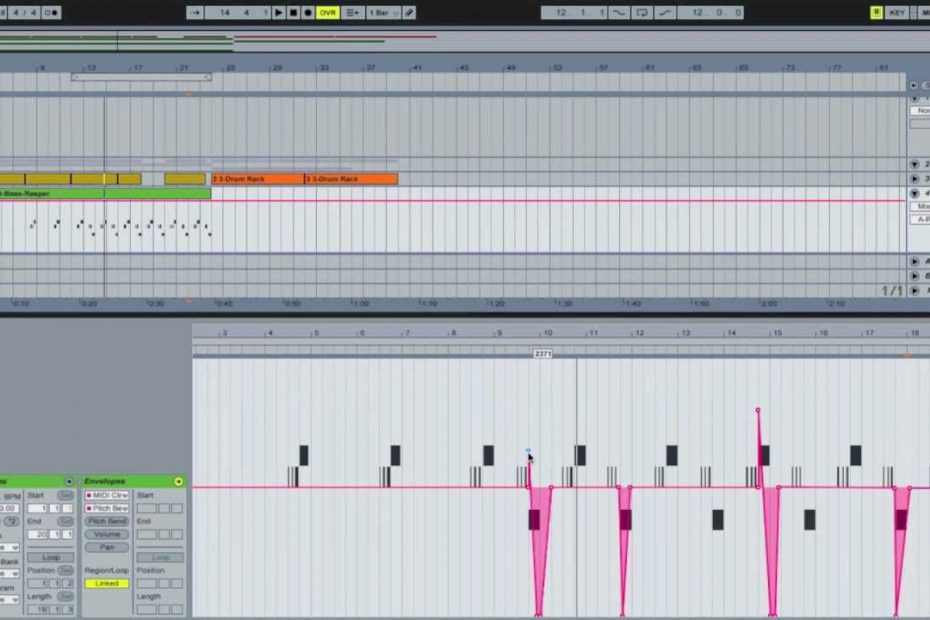Connected with a client in Hampshire, England who I have been regularly connecting with to help with his Ableton setup. He had a question regarding pitch bend data on his soft synths and how Ableton displays the values.
Understanding the pitch bend range
Pitch bend data in DAWs can certainly be confusing. Ableton (for example) records and displays data in a 14 bit scale from 0 – 16383. This wasn’t helpful for my client, who wanted to see his pitch bends as tones and semitones. We talked on the phone and I connected with his screen to show him how if he opens any synth’s plugin window somewhere in the settings, we should be able to find and set the plugin’s pitch bend range.
Then we could work out what the 14 bit scale pitch bend data would do once it was sent to the synth. For example if we sent a pitch bend controller message with a value of +8192 to a synth with a pitch bend range of 2 semitones then we would hear a movement of 2 semitones upwards. If we sent a message with +4096 we would hear a movement of 1 semitone.
If we sent a message with a value of +8192 to an instrument with a range of 12 semitones, we would hear a rise of 12 semitones. If we sent that same synth a message with +4096 we would hear a rise of 6 semitones.
Once my client saw some examples and understood the concept, he was able to set the pitch bend ranges for himself.
About the Author

I’m the owner and lead technician for Audio Support, a small company based in London, UK that connects remotely with clients worldwide to help them with their music technology issues. I’ve run Audio Support since 2005 and in that time I’ve seen and solved thousands of recording studio problems.
Outside of Audio Support, I run music workshops at a local school, play bass in a 90s tribute function band and perform modular synth jams with friends on Twitch.
Get support for similar problems:
More Ableton Live problems solved
- Controlling Keyboard Sensitivity of Komplete Kontrol S88 MK3 Keyboard
- Remote Support for the Morningstar MC6 Pro MIDI Controller
- Home Studio Visit to Configure Prism Monitoring Setup
- Integrating an iPad running Loopy Pro into an Ableton Studio Setup
- Working With Pitch Bend Data in Ableton
- Native Instruments’ Komplete Audio 6 audio interface disconnecting
- Issues with MIDI timing in a studio using external hardware synths
- MIDI controller keyboard not working properly in Ableton Live
